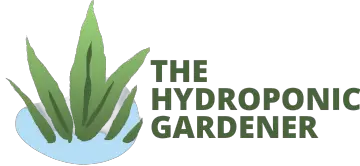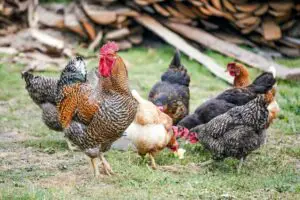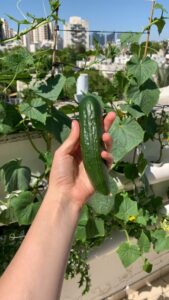If you’re considering growing plants in a Dutch Bucket system, choosing the most suitable crops is essential. Dutch Buckets are a hydroponic system that allows plants to grow in a soilless environment, with roots anchored in a nutrient-rich solution.
This unique system offers several benefits, including increased yields and reduced water usage. However, not all plants are well-suited for growing in these systems. In this article, we’ll explore the best plants for Dutch Bucket and essential considerations to remember as you select your crops. This way, you can enjoy a bountiful harvest of fresh, healthy produce.
How Does a Dutch Bucket Hydroponics System Work?
This system uses buckets or containers filled with a growing medium such as perlite or coco coir. Each bucket has a drainage hole connected to a drain pipe at the bottom. The bucket also has an overflow pipe, preventing flooding if the bucket’s water level rises too high.
Plants are grown in buckets using a nutrient-rich solution delivered to the plants through a drip irrigation system. As the plants grow, their roots absorb nutrients from the solution, allowing them to thrive without soil. The excess solution drains out of the drainage hole and is collected in a reservoir or a drain pipe, where it can be recirculated back into the system.
One of the benefits of a this bucket system is that it allows for precise control of nutrient levels and pH, resulting in healthier, more productive plants. Additionally, using a soilless growing medium reduces the risk of soil-borne pests and diseases, making it easier to maintain a healthy, thriving garden.
The Best Plants for Dutch Bucket System
If you’re looking for a highly efficient and productive hydroponic system, this system might be just what you need. Plants that do well here should have a deep water culture system, need plenty of nutrients, and have extensive roots.
So, which plants will do well in the Dutch bucket system? Let’s take a look.

Vining Plants
- Melons
- Squash
- Pole Beans
- Cucumbers

Fruit Plants
- Strawberries
- Blueberries
- Tomatoes
- Peppers

Leafy Greens
- Lettuce
- Swiss Chard
- Kale
Root Vegetables
- Potatoes
- Carrots

Herbs
- Basil
- Parsley
- Cilantro (Coriander)
Advantages of Using a Dutch Bucket System
Besides providing excellent support for plants and allowing for precise control of water and nutrient levels, here are other advantages.
- Increased Yields
One of the biggest advantages of using a Dutch bucket system is that it can increase yields compared to soil-based gardening. Because the plants are grown in a nutrient-rich solution that’s delivered directly to their roots, they can absorb nutrients more efficiently and grow faster. Additionally, these systems often allow for closer spacing of plants, further increasing yields per square foot of space.
- Precise Control of Water and Nutrient Levels
Another major advantage of using a Dutch bucket system is that you have precise control over the water and nutrient levels that your plants receive. By monitoring the pH and electrical conductivity (EC) of the nutrient solution, you can fine-tune the amount of each nutrient that your plants receive. This precision ensures that your plants get exactly what they need to thrive, resulting in healthier plants and higher yields.
- Reduced Water Use
Dutch bucket systems can also help to conserve water compared to traditional soil-based gardening. Because the solution is recirculated through the system, less water is needed overall. Additionally, the solution is delivered directly to the roots of the plants, reducing evaporation and ensuring that every drop of water counts.
- Versatility
Dutch bucket systems are versatile and can grow various plants, including vegetables, herbs, and flowers. They can also be used indoors or outdoors, making them an excellent choice for year-round gardening.
- Reduced Weeding and Pests
Finally, Dutch bucket systems often require less weeding and are less susceptible to pests compared to traditional soil-based gardening. Because the plants are grown in a controlled environment, there’s less exposure to weeds and pests that can damage crops. Additionally, these systems often use sterile growing media, reducing the risk of pests and disease.
Best Grow Mediums for Dutch Bucket Systems
Choosing the right growing medium is crucial when setting up a Dutch bucket system. The growing medium provides support and stability for your plants while also regulating moisture and nutrient levels.
There are many different types of grow media available for these bucket systems, each with its own advantages and disadvantages. However, these are the best-growing media for these bucket systems.
Perlite
Perlite is a lightweight and porous volcanic glass that’s often used as a growing medium in Dutch bucket systems. It’s an excellent choice because it has a neutral pH and doesn’t break down over time, which means it can be reused for multiple growing seasons. Perlite also provides good aeration, which helps to prevent root rot and other fungal diseases.
Coconut Coir
Coconut coir is a popular growing medium that’s made from the fibrous husks of coconut shells. It’s highly absorbent and holds water well, which makes it an excellent choice for Dutch bucket systems. Coconut coir also has a neutral pH and good aeration, allowing for healthy root growth.
Vermiculite
Vermiculite is a lightweight and highly absorbent mineral that’s often used in hydroponic gardening. It has a neutral pH and good aeration, making it an ideal choice for Dutch bucket systems. Vermiculite also holds water well, which helps to regulate moisture levels in the growing medium.
Rockwool
Rockwool is a popular growing medium that’s made from spun volcanic rock fibers. It provides excellent plant support and has a neutral pH, which helps maintain nutrient levels. Rockwool also provides good aeration, which prevents root rot and other fungal diseases.
Clay Pebbles
Clay pebbles are a lightweight and porous growing medium that’s made from baked clay. They’re an excellent choice for Dutch bucket systems because they provide good drainage and aeration, which helps to prevent overwatering and root rot. Clay pebbles also have a neutral pH and can be reused for multiple growing seasons.
Different Types of Dutch Bucket Systems
Regarding Dutch bucket hydroponics, there are several different types of systems to choose from. Whether you’re looking for a pre-made system or an affordable DIY option, a Dutch bucket hydroponic system will fit your needs.
Commercial Dutch Bucket Hydroponics
Commercial Dutch bucket hydroponic systems are pre-made kits with everything you need to get started, including buckets, tubing, and a pump. These systems are typically larger and more expensive than DIY options, but they’re also more convenient and can support many plants. Some popular brands include CropKing, HydroWest, and Bootstrap Farmer.
Homemade Dutch Bucket Hydroponic System
If you’re looking for an affordable DIY option, many tutorials are available online for building your own Dutch bucket hydroponic system. Some popular DIY setups include using PVC pipes or plastic containers instead of traditional buckets and connecting them with tubing and a pump. Homemade Dutch bucket hydroponic systems can be customized to fit your specific needs and budget, making them a popular choice for home gardeners.
Recirculating Dutch Bucket Hydroponics
Recirculating Dutch bucket hydroponic systems are designed to save water and nutrients by recirculating the nutrient solution through the system. These systems are similar to commercial Dutch bucket hydroponics, but they typically feature a reservoir that holds the solution and a pump that circulates it through the buckets. Recirculating Dutch bucket hydroponic systems are ideal for those who want to conserve water and nutrients, as well as those who want to grow a larger number of plants.
Non-Recirculating Dutch Bucket Hydroponics
Non-recirculating Dutch bucket hydroponic systems are simpler and less expensive than recirculating systems but require more frequent nutrient solution changes. These systems typically feature a bucket filled with a growing medium and nutrient solution and a drip line that delivers water and nutrients to the plant roots. Non-recirculating Dutch bucket hydroponic systems are ideal for a simple and affordable setup.
Vertical Dutch Bucket Hydroponics
Vertical Dutch bucket hydroponic systems are designed for growing plants in a vertical space, such as a wall or trellis. These systems are similar to traditional Dutch bucket hydroponics but feature stacked buckets that allow you to grow multiple plants in a small area. Vertical Dutch bucket hydroponic systems are ideal for maximizing their growing space and creating a unique and visually appealing garden.
Different Ways to Run the Drainage System in the Hydroponic System
In a Dutch bucket system, efficient drainage plays a critical role in ensuring the success of hydroponic gardening. The drainage system is responsible for removing excess water from the growing medium and root zone, allowing for proper oxygenation of the roots, maintaining nutrient balance, and preventing diseases and pests.
Constant Flow Drainage
In this method, the nutrient solution is continuously circulated through the system, and excess solution drains out through the drainage system. The drain pipes are connected to a collection container or a drain pipe that carries the solution away. This method ensures a constant flow of fresh nutrients to the plants while removing excess solution to maintain proper oxygen levels.
Timed Drainage
In timed drainage systems, the nutrient solution is periodically flooded into the growing medium or the containers, and then the drainage system is activated to remove the excess solution. This cycle repeats at specific intervals, which can be set based on the plant’s and system’s needs. Timed drainage allows for controlled irrigation and drainage, preventing waterlogging and ensuring sufficient oxygen for the roots.
Ebb and Flow (Flood and Drain) System
This drainage method involves periodically flooding the growing medium or containers with the nutrient solution and then allowing it to drain back into a reservoir through a drainage system. A timer or a sensor controls this cycle. Ebb and flow systems ensure a regular supply of nutrients to the plants while promoting oxygen exchange in the root zone during drainage.
Wick System
The wick system is a passive drainage method that utilizes capillary action to draw up the nutrient solution from a reservoir into the growing medium. Excess solution is drained through the wicks into a collection container, which can be manually emptied or connected to a drainage system. This method is simple and low-maintenance but may not suit large-scale setups or plants with high nutrient requirements.
Deep Water Culture (DWC) Drainage
In DWC systems, the plant’s roots are suspended in nutrient-rich water, and the excess solution is drained. Typically, the roots are not completely submerged but rather suspended just above the water level to ensure sufficient oxygen supply. The drainage system can consist of pipes or channels connected to a collection container or a recirculation system.
Can a Dutch Bucket System be used for aquaponic systems?
The Dutch Bucket system can be employed as a component of the grow beds in an aquaponic system. Aquaponics combines hydroponics with aquaculture, where fish waste provides nutrients for the plants, and the plants act as a natural filter for the water, which is then recirculated back to the fish tanks. The Dutch Buckets can serve as grow beds where plants receive water from the aquaponic system, which contains the nutrients derived from fish waste.
To incorporate the Dutch Bucket system into an aquaponic setup, you would need to connect the buckets to the main water circulation system of your aquaponics system. This can be achieved by running a separate water line from the fish tanks or the filtration system to the buckets. The water containing the nutrients from the fish waste would flow into the buckets and then drain back into the central system.
Maintaining a balanced aquaponic system is vital to regulate the water flow rate and nutrient levels adequately. Additionally, selecting appropriate plants for the Dutch Buckets that can thrive in aquaponic conditions is crucial. Leafy greens, herbs, and some fruiting plants do well in this type of system.
With proper setup and management, Dutch Buckets can be effectively integrated into aquaponic systems, allowing for efficient plant growth and nutrient cycling.
The Dutch Bucket system is a great way to grow everything from majestic leafy greens to aromatic herbs and compact fruiting plants like cherry tomatoes and peppers. With proper care and attention, these plants will thrive in your Dutch Bucket system, creating a verdant oasis. Happy gardening!






